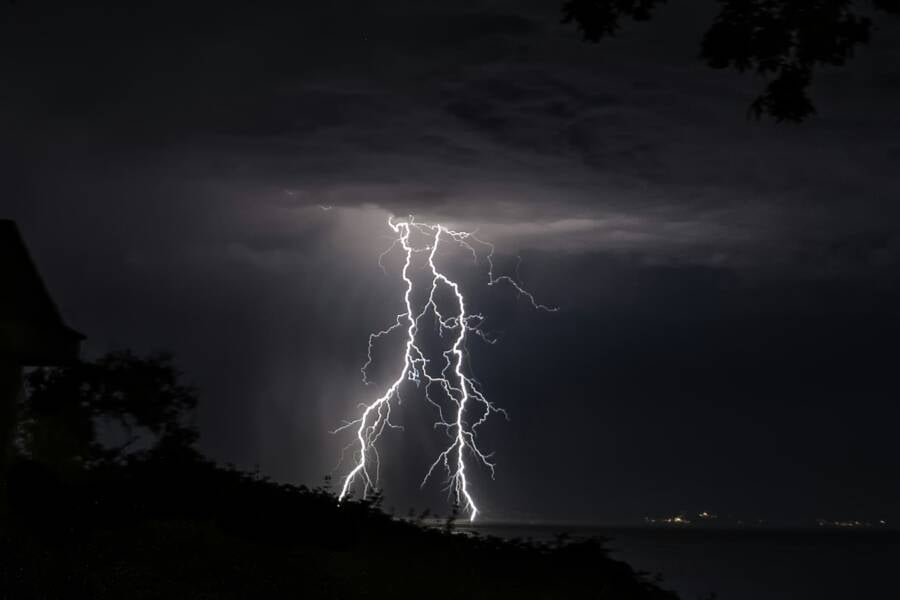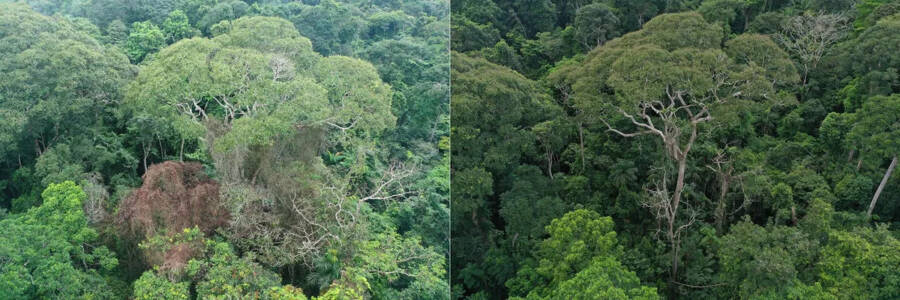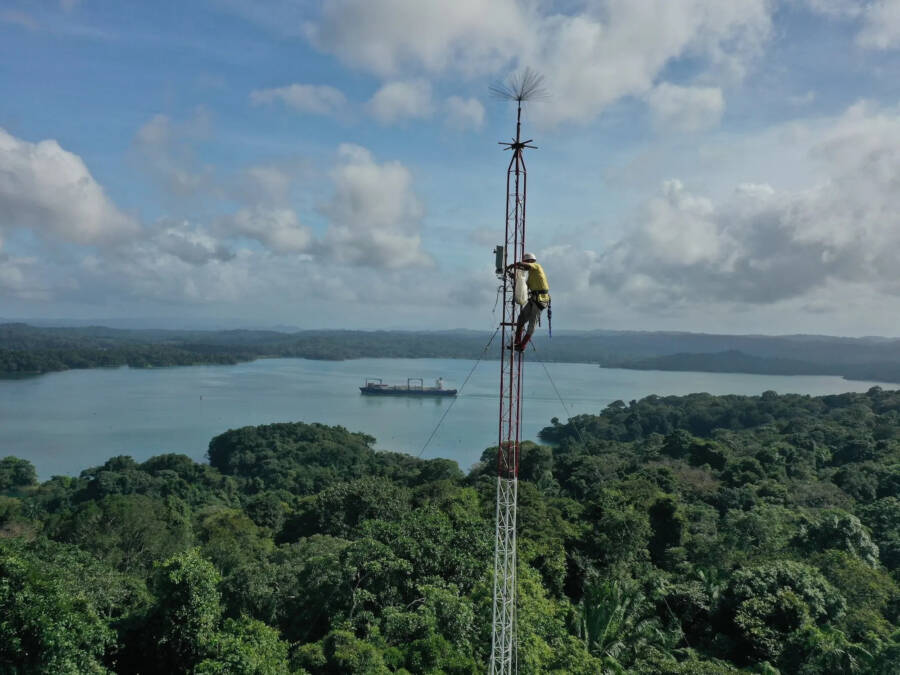The Dipteryx oleifera tree in Panama is uniquely equipped to withstand and even benefit from direct lightning strikes.

Shlomo Shale/UnsplashTypically, lightning strikes are deadly for trees — but not for one resilient species in Panama.
Hundreds of millions of trees die from lightning strikes worldwide every year, and as the climate changes, that number is rising. In tropical rainforests, these strikes are a leading cause of tree mortality, making the discovery of a lightning-resistant tree particularly fascinating.
For over a decade, researchers in Panama have observed that some trees withstand lightning strikes better than others. Remarkably, not only do these trees survive unscathed, but they also seem to benefit from the strikes.
Dipteryx oleifera, or tonka bean trees, appear to thrive in the wake of lightning. The high voltage travels through their trunks while killing off parasitic vines and neighboring trees, giving the species a natural advantage. Now, researchers are delving deeper into the mystery of what makes Dipteryx oleifera so resilient and how its secrets could help protect forests from the devastating effects of lightning strikes.
Researchers Discover The Resilience Of The Tonka Bean Tree
For over a decade, researchers have been studying trees in the forests of Panama to find ways to make them less vulnerable to environmental pressures. In the tropics, the trees are particularly at risk for lightning strikes, which can inflict major damage and even kill them. Every year, millions of trees die from lightning strikes, making the phenomenon one of the biggest natural threats to their longevity.
However, researchers noticed that some trees have been spared by lightning’s wrath, opening up questions about why they remain strong while others meet their demise. In 2015, scientists from the Cary Institute of Ecosystem Studies were surprised to find that Dipteryx oleifera, also known as the tonka bean tree, survived lightning strikes seemingly unscathed and even flourished following a direct hit.

Evan GoraA Dipteryx oleifera tree just after being struck by lightning in 2019 (left) versus 2021 (right).
In one instance, a strike to a D. oleifera tree shot its parasitic vines across the forest and killed a dozen nearby trees, but the D. oleifera remained unharmed.
“Seeing that there are trees that get struck by lightning and they’re fine was just mind blowing,” Evan Gora, a forest ecologist at the Cary Institute and the lead author of a recent study about D. oleifera, stated in a press release.
After observing this phenomenon multiple times, Gora and his team of researchers got to work analyzing the properties of D. oleifera and what sort of impact, both positive and negative, lightning strikes had on the species. Shockingly, their research provided evidence of a tree evolving to get struck by lightning.
How Does ‘Dipteryx Oleifera’ Use Lightning To Its Advantage?
Beginning in 2021, the research team used historical data from lightning location systems and field data to revisit 93 trees that had been directly struck by lightning at the Barro Colorado Nature Monument in central Panama in the decades prior.
An antenna placed in the region detected radio waves from lightning strikes, giving researchers a precise location of the strike that would later be confirmed with drones.
As detailed in a recent study published in New Phytologist, the team studied tree survival rates, trunk condition, and the presence of parasitic vines. The study compared nine D. oleifera trees with 84 others and found that D. oleifera possessed a remarkable capacity for surviving lightning strikes.

Evan Gora/Cary Institute of Ecosystem StudiesTechnician Cesar Gutierrez climbs a lightning strike tower in the Barro Colorado study area.
All nine of the D. oleifera that were directly hit by lightning survived, while over half of the trees from other species died within two years. On average, 9.2 neighboring trees were killed whenever lightning struck a D. oleifera, and almost 80 percent of its parasitic vines perished as well.
“Over those 40 years, there’s a quantifiable, detectable hazard of living next to D. oleifera. [As a tree], you are substantially more likely to die than living next to any other big old large tree in that forest,” Gora explained.
As a result, the tree species was found to be roughly 13 feet taller than surrounding trees, giving it a natural advantage in competing for resources like sunlight. However, this height difference also makes the species more likely to attract lightning strikes, creating a cycle that marks D. oleifera as the most adaptable and resilient tree in the region.
Because of its special skill, D. oleifera is more likely to reproduce and live to an older age.
“These data provide the first evidence that some trees benefit from being struck by lightning,” the researchers wrote in the study. As Gora explained, “It’s better off for a Dipteryx oleifera tree to be struck than not.”
Research is ongoing to determine what structural traits the tree possesses that have impacts on its ability to withstand lightning strikes. So far, researchers have hypothesized that D. oleifera has high internal conductivity.
Additionally, the team has expanded its focus beyond Panama, targeting trees in regions like Africa and Southeast Asia. As lightning strikes grow more frequent, understanding how to bolster the resilience of trees worldwide is becoming increasingly crucial.
After reading about the lightning-resistant Dipteryx oleifera, go inside the story of the Methuselah tree, the oldest tree in the world. Then, read about the manchineel tree, or the “Tree of Death.”





